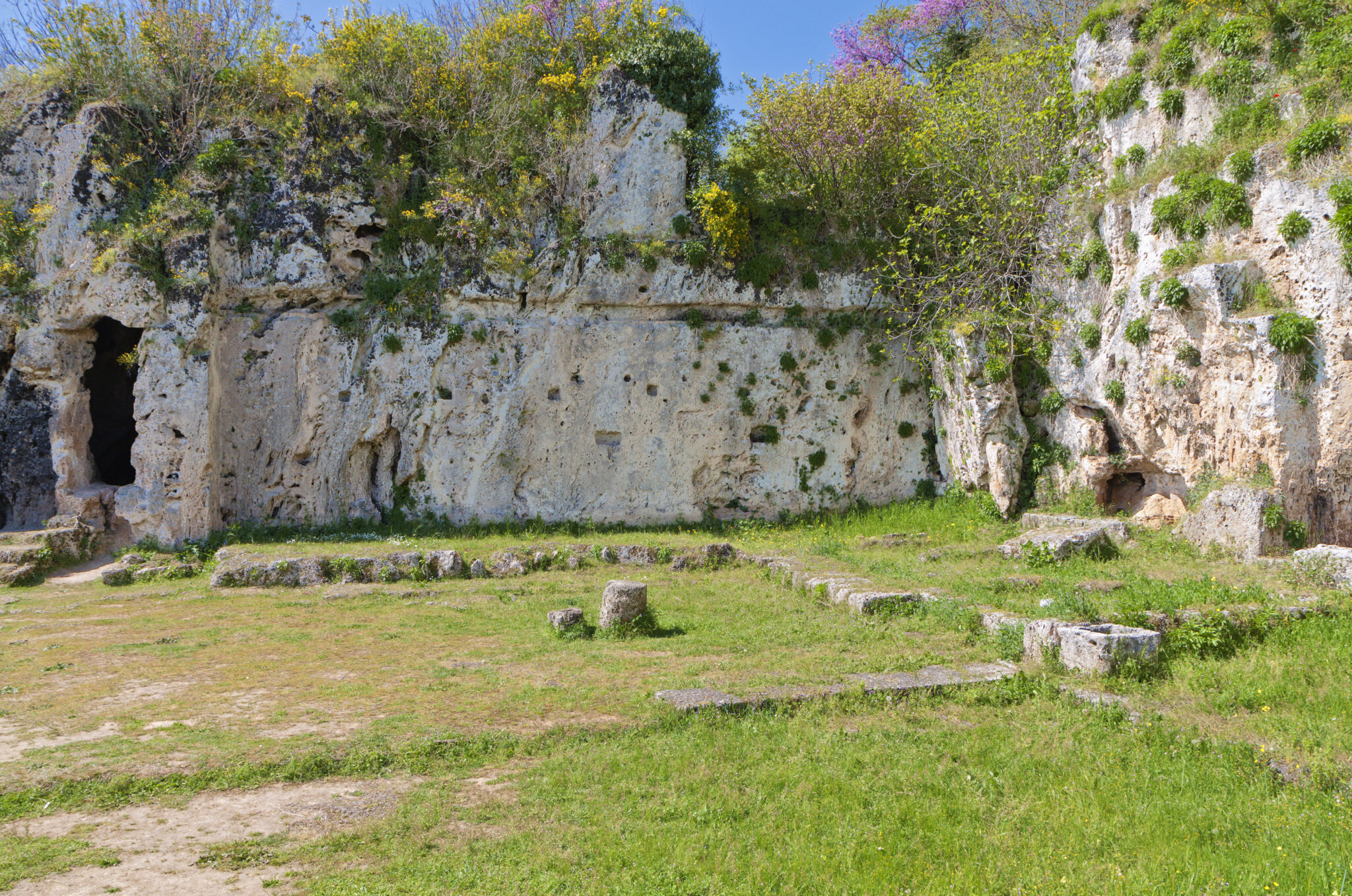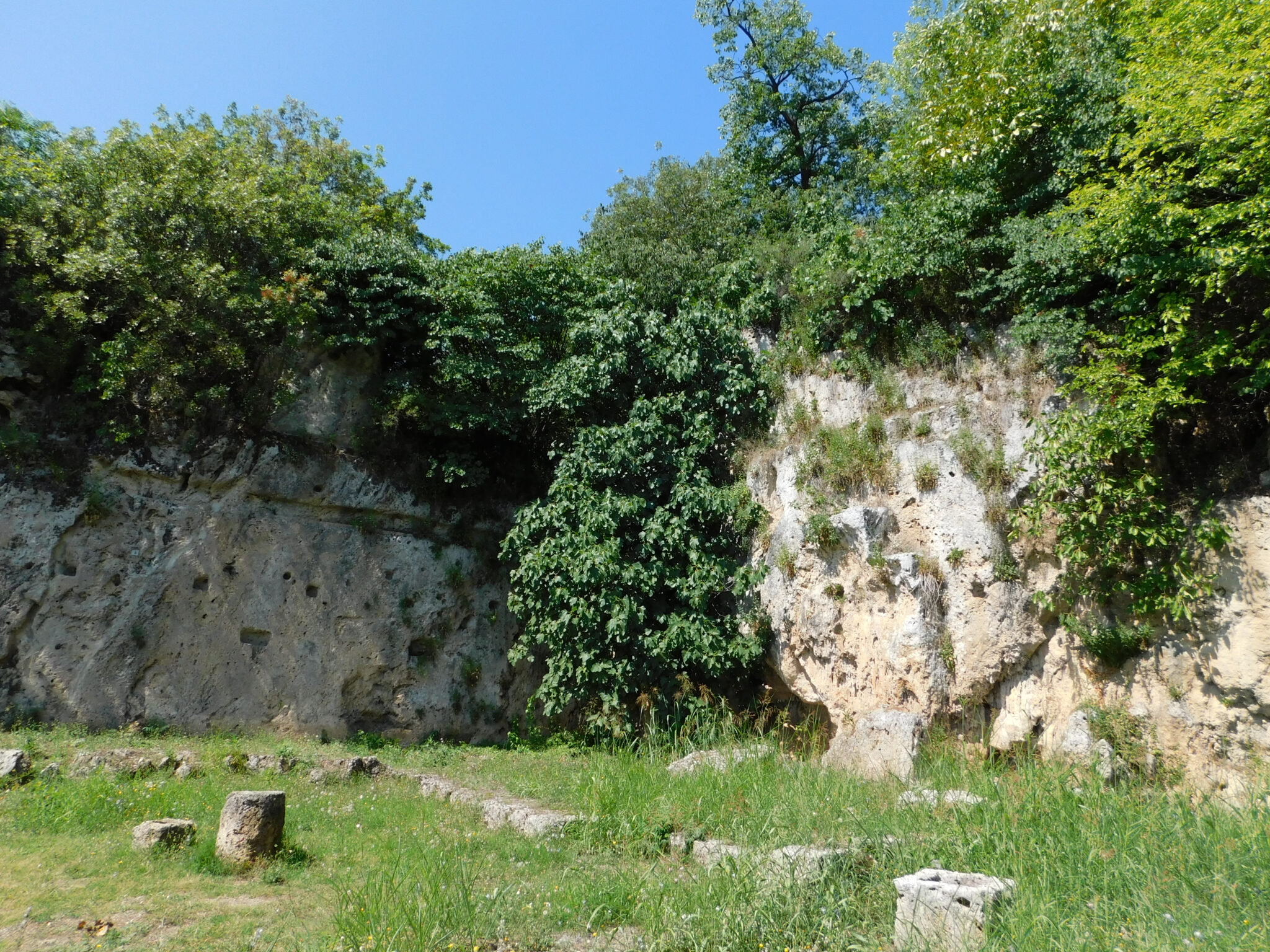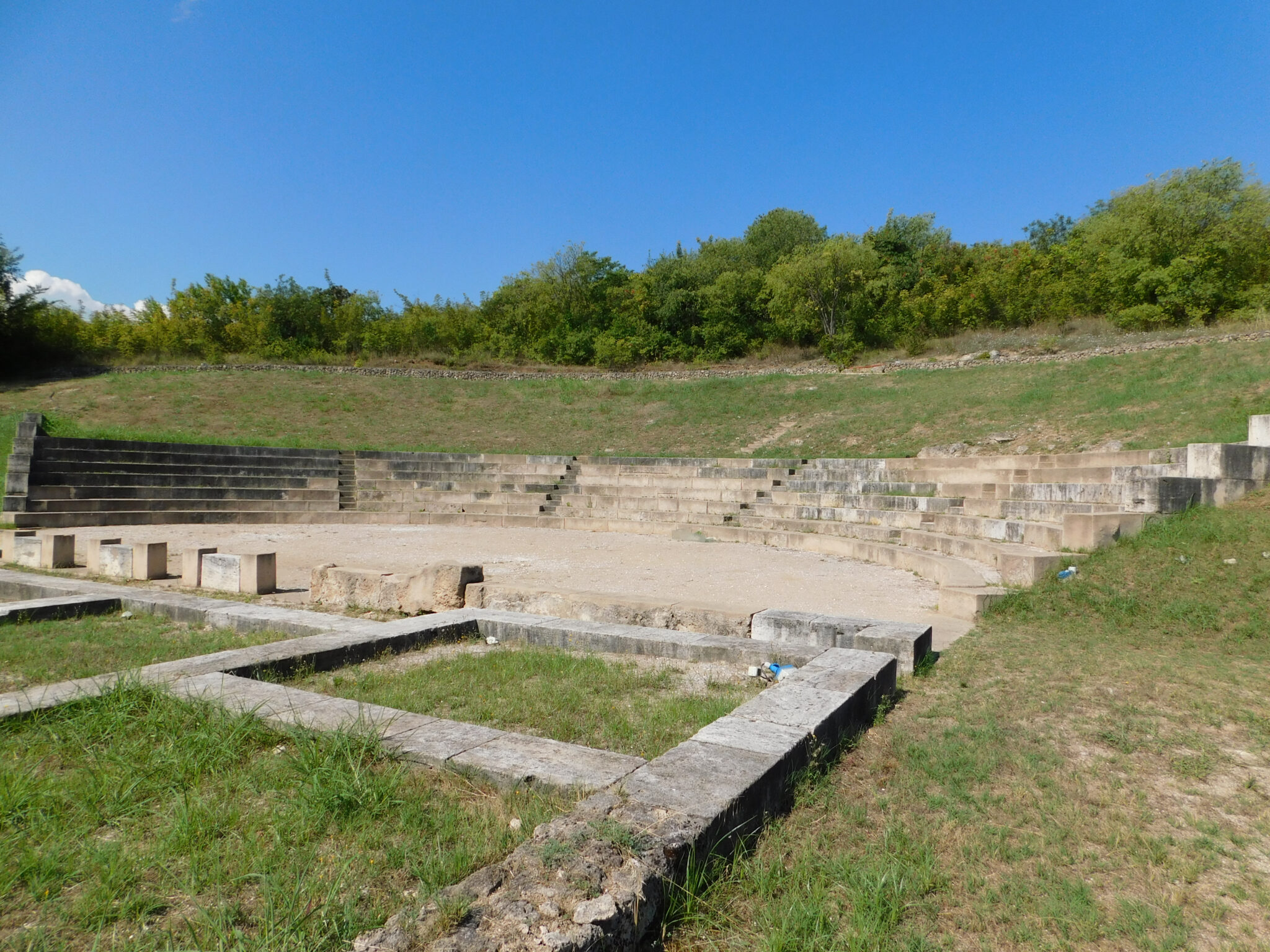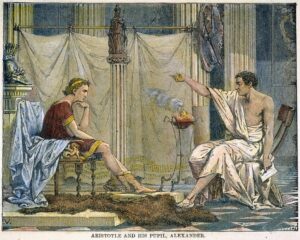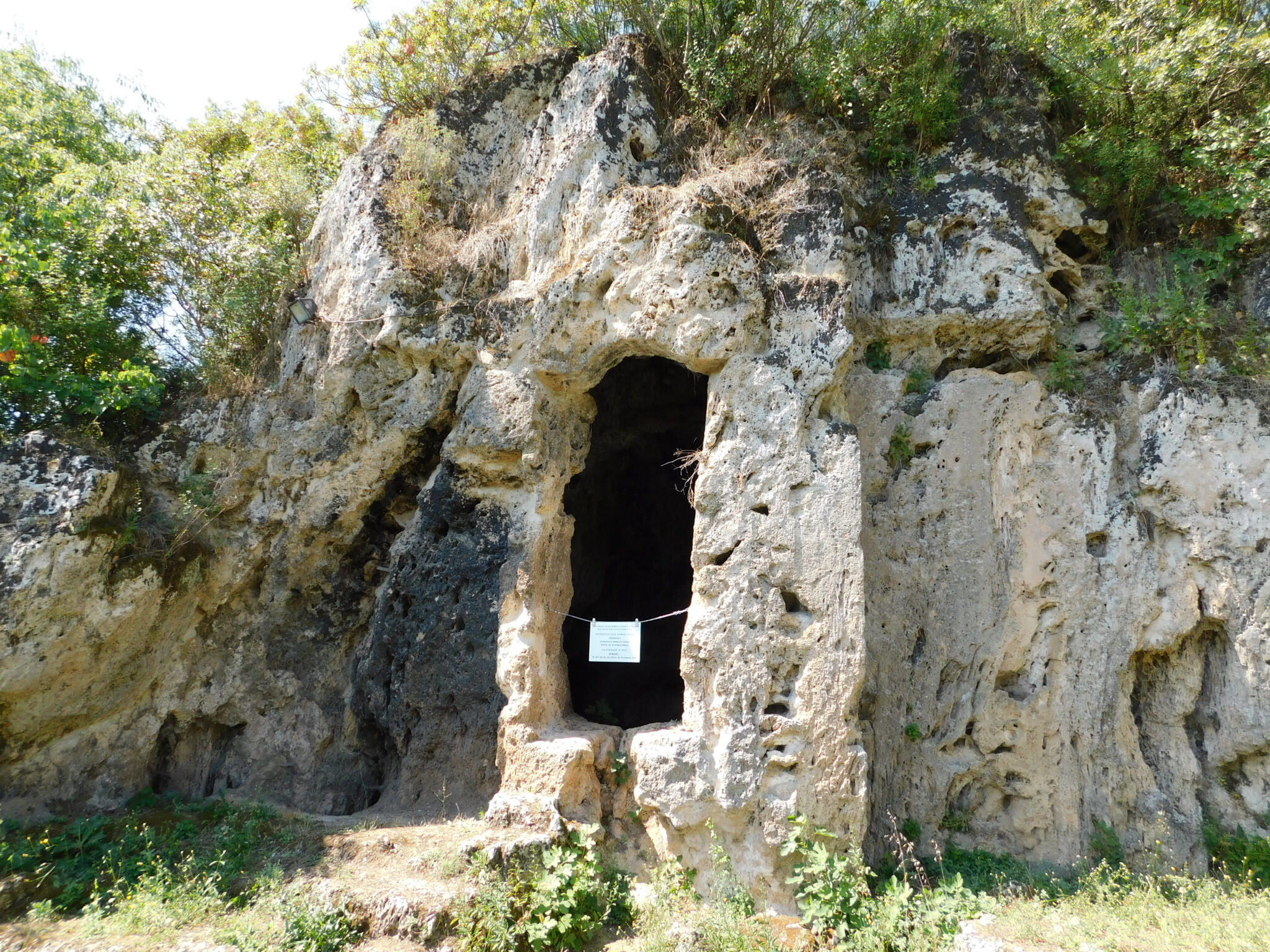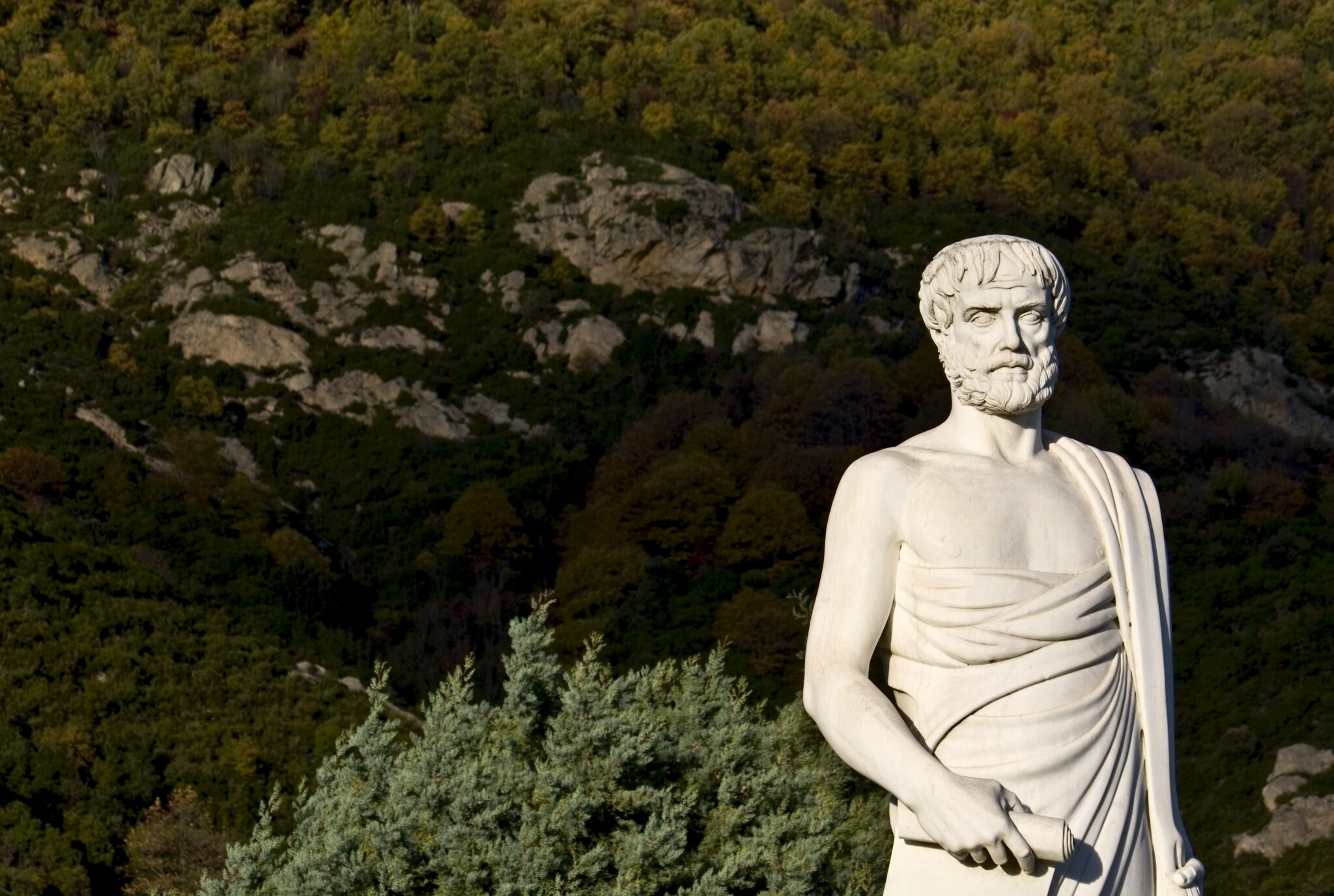Considered one the greatest thinkers of all time, Aristotle gives international appeal to the Naoussa sight known as the “School of Aristotle”. It is in the location Isvoria, about 2.5km from town, between the villages Kopanos and Lefkadia. Entrance is free during opening hours.
The area has been inhabited since the Prehistoric times, but the town Mieza (in the location Tsifliki) was founded in the 7th century BC, as part of the Kingdom of Macedonia. In the past it was believed that Mieza was the location of mythical king of Phrygia, Midas’ gardens, where the roses bearing sixty blossoms grew. Mieza grew to become a city, it reached its peak in the 4th century BC, when it was linked to Aristotle, but remained in existence until early Christian times.
In 342 BC, when Philip II invited Aristotle to the Macedonian court, the philosopher lived in Mytilene, but he willingly accepted the invitation to become the teacher of his heir Alexander who at the time was 13 years old. He remained at his service until 336 BC when Alexander took over the throne, and Aristotle left for Athens.
Until 340 BC, Alexander’s classes took place in Mieza, in a location inside the Nymph sanctuary that became known as the School of Aristotle, since it was were other noble young men of Macedonia also received an education – including Peucestas who was from Mieza and became an officer for Alexander, working closely with him. After 340 BC, even though the school was still in operation, Alexander received private tutelage in the capital of Pella so that he could perform his duties as regent when needed.
According to ancient sources, the School was a charming place with creeks, shaded caves and verdant paths. That is where the teenage Alexander first heard of Homer’s works and learned the teachings of Plutarch and Aristotle. Since the philosopher received great fame as a thinker, and Alexander became a great leader, the process of Aristotle teaching Alexander became the source of a separate legend, and a reference point for Ancient Greece and Western Civilization in general, with various Europeans travellers looking for the School already since the 19th century.
The natural landscape remains very impressive. You can stroll on the grounds of the School of which only part of a two-storey gallery with Ionic columns remains. In addition, on the cave wall that was the back part of the gallery you can still see where the beams were held. It’s worth visiting the three caves near the ruins, where the Nymphs were worshipped as it was said that Nymphs lived in caves, or near springs or rivers.
It is said that Alexander and his classmates would sleep in the caves. The archaeological excavations show that around the gallery there must have been many buildings accessed via a long path, something that seems to confirm what ancient authors said, that Aristotle liked to teach while walking.
Information
Address: Isvoria, Naoussa
Telephone: 0030 2332 043437
Opening hours: Monday-Friday 09.00-14.00, Saturday and Sunday closed
website: http://www.sxoliaristotelous.gr/
Read also:
Naoussa, Greece: Living the grape-harvest experience at the foothills of Mount Vermio
Vlachohoria and Koupatsohoria village groups: Hidden Greek gems
Mini waterfalls, arched bridges, wondrous greenery: Greece’s best rivers for rafting



